
Cob code appendix approved for the 2021 IRC
![]() For the first time, cob construction has been approved for inclusion in an International Code as Appendix U in the 2021 International Residential Code (IRC). Developed by the International Code Council, the IRC is part of a family of 15 coordinated, modern, building safety codes that help ensure the engineering of safe and resilient structures in the United States and the District of Columbia, Guam, Puerto Rico and the U.S. Virgin Islands. This comprehensive, stand-alone residential code establishes minimum regulations addressing the design and construction of one- and two-family dwellings and townhouses using prescriptive provisions. It is founded on broad-based principles that make possible the use of new materials and new building designs.
For the first time, cob construction has been approved for inclusion in an International Code as Appendix U in the 2021 International Residential Code (IRC). Developed by the International Code Council, the IRC is part of a family of 15 coordinated, modern, building safety codes that help ensure the engineering of safe and resilient structures in the United States and the District of Columbia, Guam, Puerto Rico and the U.S. Virgin Islands. This comprehensive, stand-alone residential code establishes minimum regulations addressing the design and construction of one- and two-family dwellings and townhouses using prescriptive provisions. It is founded on broad-based principles that make possible the use of new materials and new building designs.
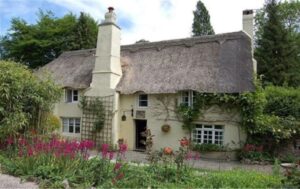
Also known as “monolithic adobe,” cob is an ancient method of earthen construction used for thousands of years around the world in regions, including Britain, Northern Europe, the Middle East, West Africa, China and the Southwestern U.S. A stiff mixture of clay-soil, straw, water and sand is placed in integrated layers to create monolithic walls that can support a roof with no need for structural posts. When properly designed, constructed and maintained, cob homes have proven to last many centuries. Embraced as environmentally friendly, non-toxic, low cost, easy to learn and artistically inspirational, cob construction has undergone a revival in the U.S. and around the world since the mid-1990s. However, because there has been no building code for cob, it has been difficult or impossible to obtain permits for cob buildings in most parts of the United States. With the approval of a model cob code, this will change, creating the possibility for legal cob construction throughout the U.S. and beyond.
What is this new cob code?
The 2021 IRC Cob Construction Appendix U was developed as a public service by the non-profit Cob Research Institute (CRI), the result of collaboration by dozens of individuals and years of research and testing at several universities and laboratories. Supporting documents can be found on the CRI website.
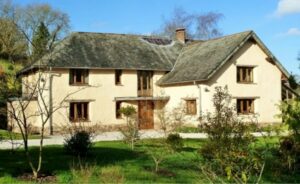
In January 2019, CRI submitted its proposed cob appendix and in May testified in support before the IRC Committee. The proposal was initially disapproved by the committee, citing the lack of testing to support the claim of a one-hour fire-resistance rating. The CRI team responded to the committee’s comments, removing the fire rating, making other improvements and re-submitted the proposal as a Public Comment. On Oct. 26, 2019, at the IRC Public Comment Hearings in Las Vegas, Nev., CRI’s revised code proposal was voted on by the Code Council voting members in attendance. The proposal received an overwhelming 93 votes in favor to six against, and later garnered the support of more than two-thirds of participating Code Council members in the Online Governmental Consensus Vote (OGCV), leading to its official inclusion in the 2021 IRC as Appendix U: Cob Construction (Monolithic Adobe). It will be published in the fall of 2020.
Unlike the main body of the code, each appendix must be specifically adopted by a jurisdiction to become a part of its building regulations. The public can influence this process by expressing the need for such a code to their local building department or overseeing state agencies. Other natural building systems, including strawbale and light straw-clay, have undergone the same process — first becoming appendices to the IRC and then being adopted into state or local building codes. For example, IRC Appendix S: Strawbale Construction was approved as part of the 2015 IRC and has since been adopted by at least six states and nine city or county jurisdictions.
Even before the cob construction appendix is adopted in a particular jurisdiction, it can greatly assist in obtaining a permit for a cob building project through the “alternative materials and methods” section of the code. To date, most permitted cob buildings in the U.S. have used this approach, but the process of compiling the evidence needed to support the permit application has often been arduous. The Code Council’s publication of Appendix U Cob Construction should go a long way towards reassuring officials that cob buildings can be a safe and reasonable alternative.
How the cob code effort began
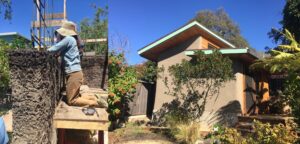
The Cob Research Institute is a non-profit organization that started in 2008 with the mission “to make cob legally accessible to all who wish to build.” It was founded by Bay Area architect John Fordice, who fell in love with cob after attending a hands-on cob building workshop in 1996. The class was led by Ianto Evans of the Cob Cottage Company, the first group to reintroduce cob construction to North America in the 20th century. Frustrated by the difficulty of obtaining the legal permission for cob buildings, Fordice passed the hat at a Natural Building Colloquium and raised enough money to file for non-profit status. He assembled a volunteer board of directors and began combing through the international literature on the engineering and regulation of earthen buildings while outlining the necessary testing and other steps towards approval of a cob code.
In 2013, CRI board members Massey Burke and Anthony Dente, P.E., of Verdant Structural Engineers, collaborated with engineering faculty and students at the University of San Francisco to determine the physical properties such as compressive strength and modulus of rupture of cob mixes with varying amounts and lengths of straw. This led to a series of other research collaborations. In 2018, CRI worked with Santa Clara University and California Polytechnic State University to construct full-size cob wall panels with various kinds of internal reinforcement, ranging from straw-only to a rebar grid similar to those used to reinforce concrete walls. The panels were attached to a testing frame that applied force to the tops of the walls in back-and-forth cycles that simulate the effects of earthquakes. The testing of these walls under laboratory conditions, along with other structural testing, gave civil engineer Dente the data he needed to write the structural provisions of Appendix U.
Another key member of CRI’s team is Bay Area architect Martin Hammer, a longtime ecological building advocate who has been involved with code-writing efforts for decades. He was the primary author of IRC Appendix R: Light Straw-Clay Construction and IRC Appendix S: Strawbale Construction, among others. His familiarity with the Code Council process and personnel, along with that of colleague David Eisenberg, were critical factors in the success of this endeavor. The team also solicited input from over a dozen experienced cob builders, six civil engineers and four architects, including Graeme North, chair of the committee that developed the seminal New Zealand Standard for Earth Buildings. The New Zealand Standards are among several earthen building codes and standards that informed Appendix U.
Plans for further testing
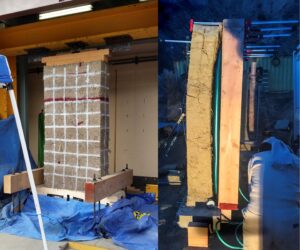
Although the adoption of Appendix U is a major accomplishment for CRI, the team plans to continue to improve the appendix in future IRC cycles to make it more useful to designers, builders and homeowners in more diverse geographical and climatic areas. The highest priorities for continued testing and research include fire resistance, thermal performance and additional safe reinforcement options.
The increasing frequency and intensity of wildfires that have devastated Australia and western U.S. states in recent years have brought increased scrutiny to the fire safety of our homes and communities. Earthen building materials like cob can provide part of the solution. In bushfire-prone Australia, earthen walls have been classified along with masonry and poured concrete as the most fire-resistant building techniques known. Although cob is so fireproof that it is commonly used to build fireplaces and wood-fired ovens, the code approval process requires testing to a national standard by a certified laboratory in order for a building system to receive a fire-resistance rating. CRI is currently collaborating with Quail Springs Permaculture to procure the testing required to demonstrate a one-hour or greater fire-resistance rating, which would allow cob walls to be used close to property lines (where it could help stop the spread of fires) and as a common wall between residential units.
One of the most significant remaining obstacles to the legal construction of cob is complying with the energy efficiency requirements of the IRC (or a state’s energy code). A building’s thermal performance depends on both the mass and thermal resistance (insulation value) of its thermal envelope, in the context of the local climate. Energy codes take all of these factors into account. Cob walls have high thermal mass, which is very beneficial in warm climates or seasons, but low thermal resistance, which is especially important in cold climates or seasons. Most energy codes consider a cob wall a “mass wall” like concrete block, brick or rammed earth, which reduces the requirement for thermal resistance. But even in warm climates, it is difficult for cob walls to comply without additional insulation. This presents a challenge, as most rigid manufactured insulation materials are not vapor-permeable enough to meet the requirements of Appendix U for finish systems.
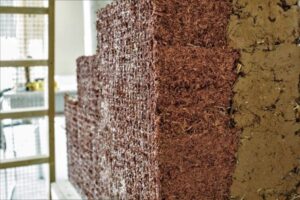
To address this issue, CRI has begun a project to test both the structural and thermal properties of lower-density cob mixes made by substituting lightweight aggregate such as crushed pumice for the sand and by increasing the straw content. Even these measures will be insufficient in colder regions. A research project called CobBauge, based at the University of Plymouth, England, has been devising ways to insulate cob walls by wrapping them with lighter mixes of clay and natural fibers, including hemp and straw. Further research and testing in this arena will be critical to enable cob homes to be built both legally and efficiently across North America and other temperate regions.
Another concern is cob’s performance in earthquakes. The IRC utilizes the Seismic Design Categories (SDC), A through E, as a classification assigned to a structure based on its risk category and the severity of the design earthquake ground motion at the site. Appendix U states that any cob building outside of SDCs A, B and C requires an engineered structural design, typically by a licensed civil engineer. The full-scale testing done with Santa Clara University — along with similar tests in collaboration with California Polytechnic State University, Quail Springs and Oasis Design — yielded data about the strength of several reinforcement methods that are summarized in tables in Appendix U. The test walls employed a combination of reinforcing strategies, which included straw, with and without steel bar and/or steel mesh to strengthen the wall against seismic and wind lateral loads. Other reinforcing combinations, materials and strategies that could be tested, include the use of bamboo, fiberglass, basalt fiber, and/or plastic mesh and bars, to increase the range of options available to builders and designers. Further testing can also increase our understanding of proper connections between cob walls and foundations and roof assemblies.
Plans to promote the cob code
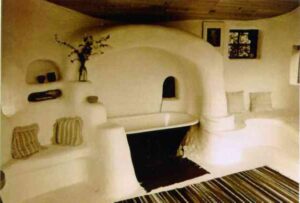
In addition to further testing, CRI plans to advocate for the adoption of Appendix U by as many building jurisdictions as possible. As evidenced by the Code Council vote last October, building officials have shown remarkable enthusiasm for the cob code, presumably motivated by their desire for environmentally responsible and fire-safe building methods. Still, the building regulatory community is understandably conservative, as it is charged with ensuring building safety. Education and advocacy will be necessary to increase awareness and understanding of this building system and bring it into wider use.
CRI also intends to create an educational guide for builders who wish to use Appendix U. Building codes can be challenging to interpret, and many people who are drawn to natural building methods lack experience deciphering the technical language. Towards that end, the CRI team provided input to Code Council staff on the commentary for Appendix U, which will be published along with Appendix U in the commentary version of the 2021 IRC next year. This commentary is especially important since many users and code officials will be unfamiliar with this material and building system. It will provide background information to help designers, builders and building officials alike understand the intent of the code and how to use it correctly. Appendix U: Cob Construction (Monolithic Adobe) will be an evolving resource for promoting safe cob building practices, encouraging ever-greater acceptance of this time-tested building method.
CRI needs your support
The research, testing, and writing of this cob construction appendix, and its submittal to the Code Council for approval have been an enormous undertaking over many years. Although CRI’s work has been generously supported by a huge volunteer effort by design and building professionals, in order to continue its work, CRI needs outside support. If you recognize the value of building with the earthen material of cob, please visit www.cobcode.org and join with CRI to make cob safe and accessible to everyone.








